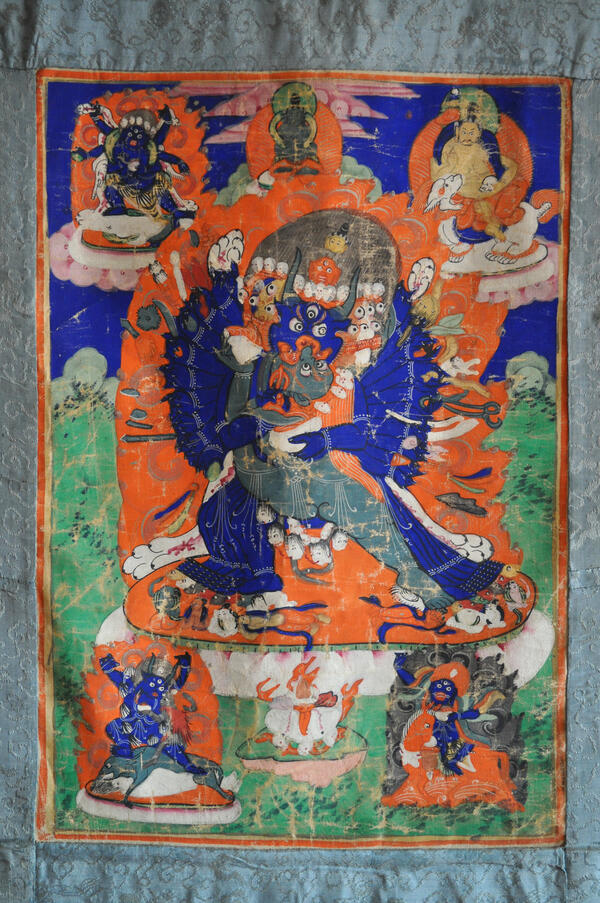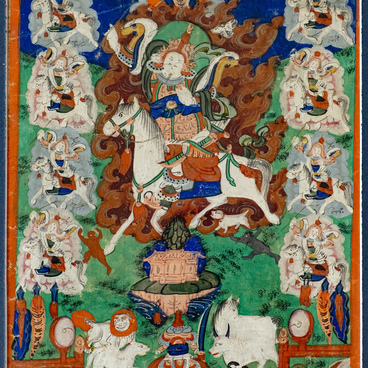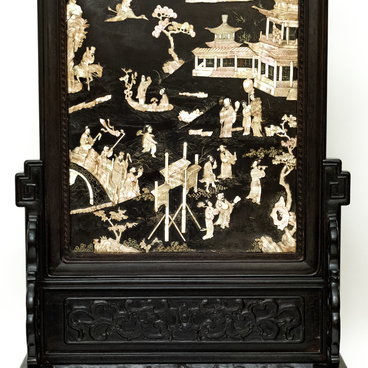The art of thangka is a traditional cult painting on scrolls in Central Asian countries. This type of painting is associated with Tibetan Buddhism, which has its roots in the cultural traditions of Ancient India.
The plot of the thangka is compositionally built in the form of yab-yum (father-mother), where Yamantaka is depicted in union with his spiritual consort Vajravetali. To understand the complex meaning of the plot, it is necessary to briefly cite one of the versions of the ancient Tibetan legend about the origin of Yamantaka.
In the old days, there was a great yogi (or wanderer) who was told that he would achieve enlightenment after 50 years of meditation. He meditated in a cave. When there was only one day left before the end of the appointed period, thieves broke into his cave with a stolen bull. They slaughtered the bull, built a fire and had a feast. Suddenly they saw the shadow of a yogi. Fearing that he might tell someone about the theft, they cut off his head and threw it away.
After the meditating yogi’s consciousness returned to his body, he was surprised to find that his head was missing. In a frenzy, the yogi began to rush around the cave, trying to find it, but found only the bull’s head, which he placed on his shoulders. Enraged, the yogi killed the thieves, but at the same time he spread his boundless rage to all people, continuing to kill and destroy everything around. So he turned into the evil Lord of Death.
A group of saints then offered their prayers to Manjushri, asking him for protection and help. Manjushri answered their pleas. Since he is a bodhisattva of wisdom, he realized that only an unusual angry emanation could overcome the power of the Lord of Death, and he emanated from himself a being who became known as Yamantaka, the Conqueror of the Lord of Death. His main head-face took the form of a bull to match the strength of the angry yogi, but above it is the head of Manjushri himself as a sign of the fully enlightened inner nature of Yamantaka.
Yamantaka as the wrathful manifestation of
bodhisattva Manjushri is depicted in the center with his shakti. He is depicted
naked, representing the truth, dark blue in color with 16 legs and 24 arms. He
has three faces. His main lower head is the head of a bull, crowned with a
diadem of five skulls, each symbolizing the cure of 5 poisons of mind:
ignorance, attachment, anger, pride and greed.




